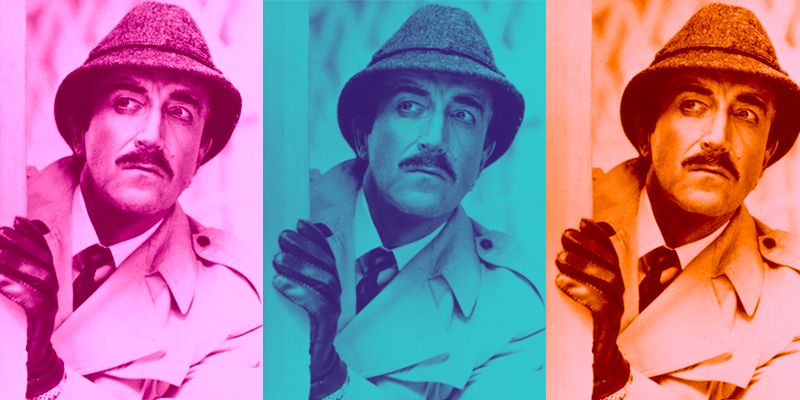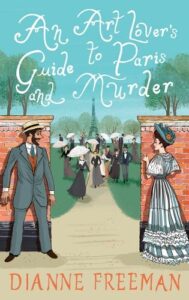My protagonist in the Countess of Harleigh mysteries, Frances Hazelton, generally takes on crime in late Victorian London. She’s an amateur sleuth, so police procedures don’t take on a huge role in the story, but even if I don’t show them to the reader, I need to know what those procedures are. How is Inspector Delaney, my London cop, going about his investigation, while Frances works the case in her own way?
The police in my mysteries don’t bumble and fumble—they are professionals even if they stretch the rules now and then to allow Frances or her husband, George, access to evidence or crime scenes. After all, when the crime happens among the aristocracy, it helps to have assistance from inside that tight knit group. Over time, Frances and Inspector Delaney developed a working relationship.
Then I ruined everything by sending Frances and her husband to Paris, where, of course, they have to deal with a murder. Delaney can’t go with them, and since Frances and George are not the police, I had to create some police authority for them to work with—a French Flic. I came up with Daniel Cadieux, a Parisian down to the bone, regardless of the Belgian surname. Charming and confident with a dry wit, Cadieux is definitely his own character, but I’ll admit to studying many of the French detectives who came before for inspiration. Here are some of my favorite fictional French flics and their methods of investigation.
Detective Chief Superintendent Jules Maigret, created by Georges Simenon
Maigret began his career as a police officer in his 20s. In the novels I’ve read, and the 90s British TV series, Maigret was between 45 – 55 years old. He’s a big guy in well-cut suits, an overcoat, and bowler, and frequently smokes a pipe. His method of investigation is to get into the head of the killer and ultimately empathizes so much that he regrets the need to arrest them. However, Maigret is so much in the killer’s head, and his own, that his character wouldn’t make a good partner for my amateur sleuth. With Maigret on the case, no one else is needed, just a certain amount of patience. If you need daily updates, he’s not your man.
Chevalier Auguste Dupin, created by Edgar Allen Poe
Dupin first appeared in 1841 in the short story, “The Murders in the Rue Morgue.” Like Maigret, Dupin’s method of investigation relies on close observation and through his logic seeks the simplest of conclusions from those observations. I’m cheating a little here because Dupin is not a member of the police—even though he knows the prefect—but a private investigator. Though he lives in reduced circumstances, he is from the upper class and is a Knight in the Légion d’honneur. He is a mathematician, a poet and a solitary individual. The workings of his mind are revealed through his friend the narrator. If you want a detective who is simply brilliant, Dupin would fit the bill.
Monsieur Lecoq, created by Emile Gaboriau
Monsieur Lecoq arrived on the literary scene in 1868 as a detective employed by the French Sûreté. His character is clearly based on the non-fictional Eugene-Francois Vidocq, the criminal who started his career on the right side of the law when he was recruited as a prison informant. He produced such good results that he was released to form a detective unit within the police. He hired ex-criminals and used their combined knowledge of the underworld to great success. The character Lecoq, young and energetic, also uses his criminal background to inform his investigations. He enjoys the challenge of finding the solution to a case in the smallest of clues. Though I skipped the criminal background, this character may have the most influence on my Inspector.
Inspector Gabriel Hanaud, created by A.E.W. Mason
Inspector Hanaud first appeared in 1910 in the novel At the Villa Rose. Subsequent books released sporadically over the next 36 years, likely due to two wars, with the sixth and final book published in 1946. The author has been quoted as saying he wanted to create a detective as physically unlike Sherlock Holmes as possible. Hanaud is stocky with broad shoulders as opposed to Holmes slenderness, but his personality is also in opposition to Holmes. Hanaud is open and friendly. He trusts his intuition and occasionally turns to psychology when working on a case. A very likeable character who gets results and may have been one of the inspirations for Agatha Christie’s Hercule Poirot.
Inspector Jacques Clouseau, created by Blake Edwards
Inspector Clouseau from the Pink Panther series did not appear in any books, but is such a famous fictional French police officer, I had to include him. Bumbling, fumbling, with such a ridiculous French accent that even the French characters in the movies failed to understand him. Clouseau created chaos with every step, but miraculously always managed to catch the culprit. Over the series, he was successful enough to be promoted to Chief Inspector. While I enjoy a little humor and would love to write lines as hilarious as some of Clouseau’s, my inspector is a secondary character and someone like this would definitely steal the show.
***


















